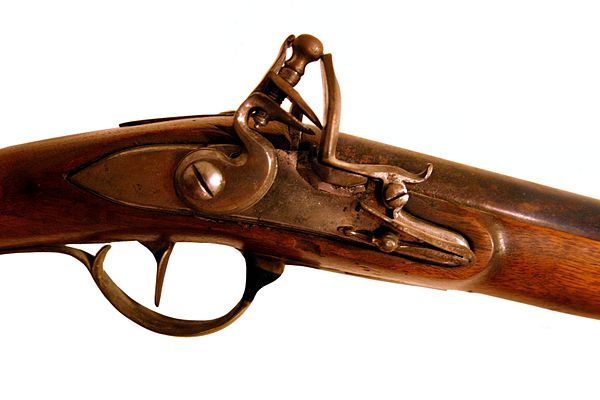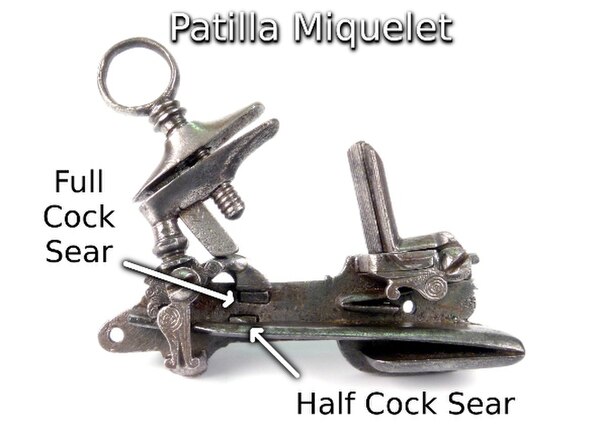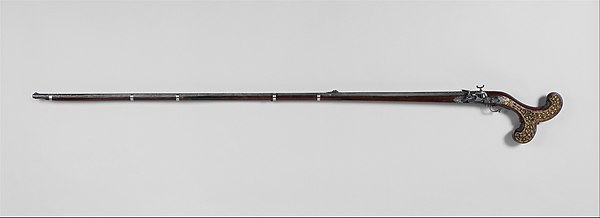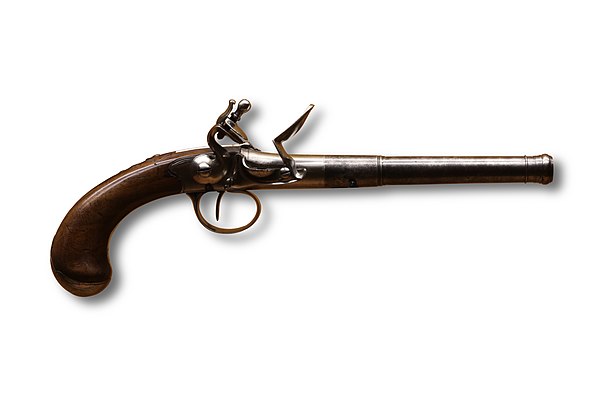Lock (firearm)
Videos
Page
The lock of a firearm is the mechanism used to initiate firing. It is a historical term, in that it generally refers to such mechanisms used in muzzle-loading and early breech-loading firearms. Side-lock refers to the type of construction, in which the individual components of the mechanism are mounted either side of a single plate. The assembly is then mounted to the stock on the side of the firearm. In modern firearm designs, the mechanism to initiate firing is generally constructed within the frame or receiver of the firearm and is referred to as the firing or trigger mechanism.

This flintlock mechanism is distinct from the metal barrel extending to the right, and the surrounding wooden stock encloses and obscures the trigger mechanism connection to the actuation spring.

The patilla style miquelet lock fully cocked. An extension of the cock is resting on and restrained by the upper of the two horizontal sears protruding through the lock-plate. The movement of the sear is nominally parallel to the axis of rotation of the cock. Depressing the trigger causes the sear to be drawn inward and release the cock. This type of sear was used in firelocks prior to the advent of the true flintlock.
Flintlock
Videos
Page
Flintlock is a general term for any firearm that uses a flint-striking ignition mechanism, the first of which appeared in Western Europe in the early 16th century. The term may also apply to a particular form of the mechanism itself, also known as the true flintlock, that was introduced in the early 17th century, and gradually replaced earlier firearm-ignition technologies, such as the matchlock, the wheellock, and the earlier flintlock mechanisms such as the snaplock and snaphaunce.

Flintlock of an 18th-century hunting rifle, with flint missing.

An English gentleman c. 1750 with his flintlock muzzle-loading sporting rifle, in a painting by Thomas Gainsborough.

A heavily decorated 18th-century Bondikula flintlock musket from the Kingdom of Kandy is an example of flintlock usage in Asia

Flintlock pistol in "Queen Anne" layout, made in Lausanne by Galliard, c. 1760. On display at Morges military museum.